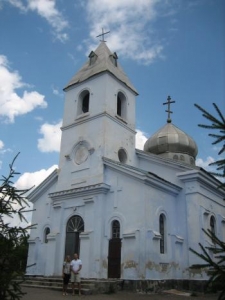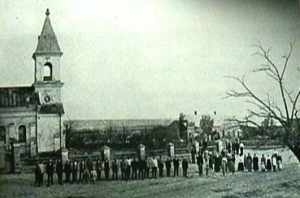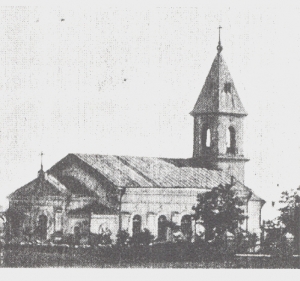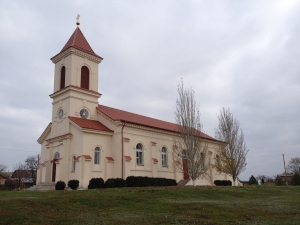In 1787, the first simple cross church was built of timber in Gammalsvenskby. It had room for 200 people and stood for hundred years. From 1782 to 1788, Gammalsvenskby had his own priest, but when the vicar,Johan Adolph Europaeus left the village, the congregation was subordinated to the German congregation in Josefsthal. First, in 1883, the joint German-Swedish Lutheran congregation in the Alt-Schwedendorf became a separate congregation. The Lutherans in the area belonged regardless of nationality to this new congregation. From time to time, the parish clergy could speak Swedish, but most often it was the bell-ringer who got to read from postilla and bible in Swedish. The school, which was managed by the congregation, became a battlefield between Germans and Swedes. The Germans tried to make Germans of the Swedish people by introducing German as their only language of instruction. Only when a few Finnish-Swedish school teachers arrived in the 1880’s they succeed to establish a permanent Swedish teaching class. Before the World War 1, the village had good contact with the Swedish parish in St. Petersburg and a number of Swedish children were offered to boarding school in the capital.
With collected funds in Russia, Finland, Sweden and in North America, they managed to get a total of 20,000 rubles for the construction of a new church. It became a race with the Germans who also wanted to build a church on the border between the neighbor villages Mühlhausendorf and Schlangendorf. And right next to the church they planned the parish community house. The Swedes won the race and around mid-summer 1885 the new church was initiated and dedicated to St. John’s clear. It became a beloved church that meant a lot to the Swedish community. In the autumn of 1899, the help sister Emma Skarstedt came to the village sent by the mission organization KMA. She brought with her an in-house revival movement that was partly tied to the menhutical movement that the Swedes from Dagö had been attracted to during the difficult 18th century. In 1922, the bell-ringer, watchman and teacher Kristoffer Hoas traveled to Sweden to be ordained. As early as 1919, the Swedes had broken out of the common parish and formed their own Swedish Lutheran congregation. It took three years till it was recognized. 1782-88 and 1922-28 were the only years that the Swedes had their own congregation with their own Swedish priest.
After 1929, the church was used as a cultural center and partially destroyed. In 1989, it was just a ruin. Then a local Ukrainian Orthodox congregation began under the leadership of Alexander Kvitka to rebuild the church. In 1992, a Swedish-Lutheran congregation was formed again and they agreed with orthodox about a common right of use of the church. The Germans also registered their own congregation and received help from Germany to rebuild their church and hire a German-speaking priest. The last Swedish villagers have received regular visits every year by Kjell Knutas, Henning Herman, Staffan Beijer and Karl-Erik Tysk who have been the most frequent traveler of all. It has been taught Swedish on a voluntary basis in school which was initiated by Kristina Sturén in early 1990’s. The teaching of Swedish runs nowadays by the association Svenskbyborna.
